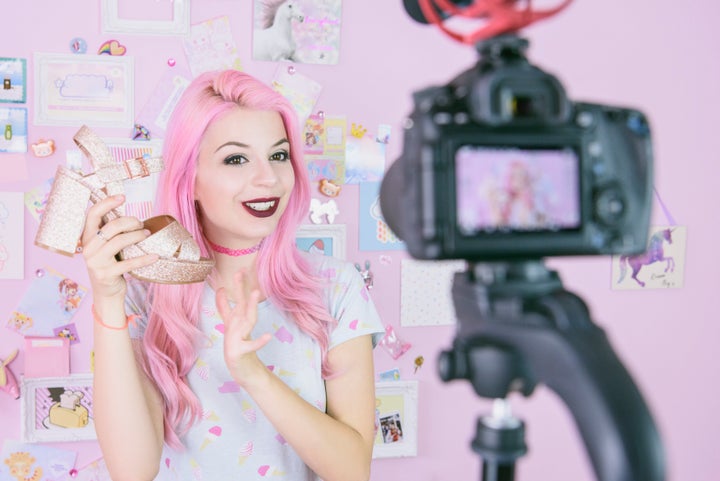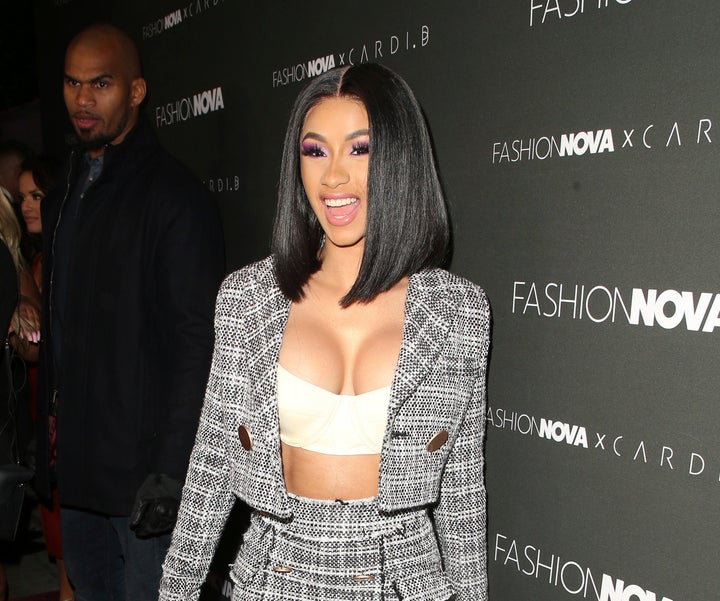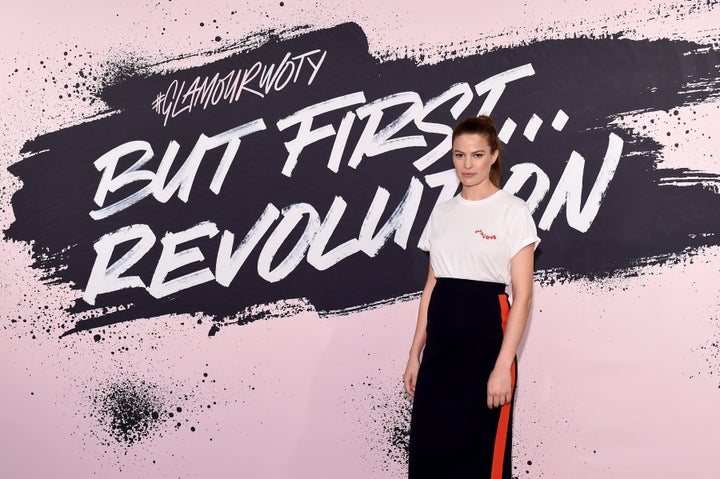
Imagine missing the chance to save humanity from runaway climate change because we couldn’t resist Cardi B-inspired tracksuit pants.
The suggestion might seem ridiculous, but our love of stuff is driving us toward environmental catastrophe, from the energy-intensive extraction of raw materials to the pollution of freshwater and greenhouse gas emissions created as we manufacture, transport and dispose of all the things we consume.
One of the biggest culprits is fast fashion, the system of rapid production that creates low-cost clothes increasingly treated as disposable. Without reform, the fashion industry (of which fast fashion is the dominant player) could be responsible for a quarter of the Earth’s carbon budget by 2050.
The advice is clear — and simple. Keep your current clothes working longer and be more conscious about what you buy. Extending the life of clothes by nine extra months of active use would reduce carbon, water and waste footprints by around 20-30 percent per garment, according to research by U.K. government agency Waste Resources Action Programme.
But there is a new force at work fueling consumerism on an unprecedented scale: social media. For digital natives used to stalking social media to track down items, being able to “swipe up” and purchase an outfit worn by someone they follow is intuitive. It works across platforms and across sectors as “influencers” push fast consumption in travel, beauty, food and fitness.
There’s one platform that rules. “For me, it’s all about Instagram and it’s all about the influencer,” said Rupert Esdaile, a freelance brand and social media expert. “Fast fashion labels target the audiences where influencers reign. Engaging people on Instagram is key to selling these products and the influencers are the best tool.”
This social-first strategy has been like rocket fuel for Fashion Nova, Instagram’s most popular fashion brand whose rise is as eye-catching as its tight-fitting, low-cost clothing. From an original LA store opened in 2006, investment in social strategies has seen the brand amass more than 14 million Instagram followers.

In 2017, Fashion Nova was one of the most Googled brands on the planet alongside luxury behemoths like Gucci and Louis Vuitton that have huge marketing budgets and runway shows. The company introduces 600-900 new pieces each week. While this leaves sustainability experts like me reaching for the smelling salts, it’s a source of pride for CEO Richard Saghian. “There aren’t many companies that are creating clothes as fast as we are,” he has reportedly said. “There aren’t many companies that post on social media every 30 minutes. We bring so many trends every day.”
There will soon be more companies like Fashion Nova as other brands emulate this model and increasingly use the micro-influencer — someone who has between 10,000 and 100,000 followers online.
We all have the potential to be influencers. “Influencer marketing used to be celebrities — think George Clooney with Nespresso,” said brand expert Esdaile. “Now brands have figured out that the public prefers someone who is a bit more relatable, who we consider a peer. Whatever your size of audience, brands would like to leverage it.”
Esdaile said this is often done by brands providing influencers with a discount code that they share with their followers. “Your influence is tracked essentially by the discount code and you earn commission.”
Social media platforms like Instagram can distort our reality, said Danielle Wagstaff from Federation University Australia, who studies the psychology of popular social media.
“Back in the day, your social circle was formed of friends and family,” she said. “Now, you have access to all of these influencers. That means our perceived social circle is enormous. It would be too exhausting to make a judgment every time you saw a new image of someone from this circle, so cognitively your mind automatically creates an average.”
The problem with this average, according to Wagstaff, is that all the images you’re exposed to on social media are highly curated and edited — even no filter, no makeup shots are selected — meaning that the “average” that your brain creates is not a true representation of someone’s lifestyle, attractiveness or income.
“If you’re constantly being presented with false information or information that is biased, then your schema [a cognitive representation of your sense of self, other people and products] is biased. It doesn’t represent the real world,” Wagstaff said.
At this point, we become susceptible to good old-fashioned FOMO (fear of missing out). It can seem perfectly reasonable to need 12 bikini options for a weekend vacation or put long-haul flights to Bali on a credit card to get some good shots for Insta. What’s more, we are driven to act immediately. Normal values can be overridden by the power of the platform.
Other research tells us that the same demographic ramping up consumption through social shopping — millennials and generation Z — are also the ones with finely tuned ecological consciences. Surely some influencers could be diverted from pushing products to protecting the planet?
Esdaile thinks this is starting to happen. “Influencers are already reconsidering how their position as people of influence can affect the world around them. There are some really prominent examples of those who have started to use their platforms as an arsenal for good.” He cites zero-waste vegan chef Max La Manna and model Cameron Russell as standout examples, alongside the fact there are more than 3 million Instagram posts bearing the hashtag #SustainableFashion.

The business model underpinning social media platforms doesn’t make it easy. “I turn down probably 10-20 approaches from brands every week,” said New York-based earth activist and sustainable influencer Renee Elizabeth Peters, who has close to 18,000 Instagram followers. “We simply can’t keep consuming in the way that we have done in the past, and that means that I can’t promote consumption.”
Peters does still promote brands though, but says the ones she chooses must “be revolutionary or something that I really need and am going to be using authentically.”
“Instagram is really good at helping people scratch the surface. And to show people those gateway changes such as using less plastic,” she said. “But the issue is: Once we’ve made all the really easy switches, how do we implement the real changes that need to be made? What do we do about much bigger systematic issues? That’s where the line gets drawn on Instagram because all of those big institutional changes that need to happen.”
Recently she expressed these limitations in a post titled: “The Truth Most Sustainable Influencers Won’t Tell You.” In it, she explained that she tried to eliminate single-use plastic from her life and found it much harder than is suggested by the perfectly filled mason jars that dominate the feeds of zero-waste influencers. Peters’ post received more than 1,700 likes, but many followers failed to read the text that explained what she meant. Some worried she was telling them that small actions didn’t count.
She later took to Instagram Stories to explain that her beef was with the failure of so many sustainable influencers to acknowledge the privilege — both in terms of time and money — needed to adopt this lifestyle. If sustainable bloggers have that privilege, she added, they could invest that time on demanding substantive action, such as contacting legislators and companies.
This also makes sense to Wagstaff. “We tend to use a peripheral route to persuasion when we are scrolling through platforms like Instagram,” she said. “In this route, we’re attracted by things like shiny colors or how attractive our presenter is. As humans, we’re constantly looking for opportunities to take the cognitive load off us and have a bit of a rest.”
This goes some way to explaining why the brightest stars on social media include babies with really big hair rather than climate change experts. Social media might be a phenomenal way of connecting people but it’s also an engine of hyper consumption and distraction, and that’s unlikely to stop any time soon.
For more content and to be part of the ‘This New World’ community, follow our Facebook page.
HuffPost’s ‘This New World’ series is funded by Partners for a New Economy and the Kendeda Fund. All content is editorially independent, with no influence or input from the foundations. If you have an idea or tip for the editorial series, send an email to thisnewworld@huffpost.com
